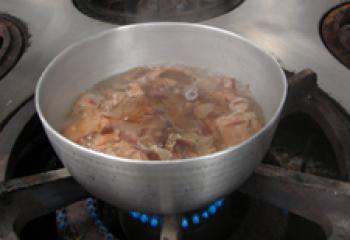What’s Cooking in… Japan
This item appears on page 52 of the March 2018 issue.
In Japan on the first day of the New Year, having a dream that includes either Mt. Fuji, a hawk, an eggplant or all three portends a prosperous and happy year.
The last days of 2016, my husband, John, and I had a 24-hour stopover in Narita, Japan, so, for $129 and complimentary round-trip transfer from and to the airport, I booked a stay for us at the ANA Crowne Plaza Narita (68 Horinouchi, Narita-shi, Chiba; phone, in the US, 877/227-6963, crowneplaza.com).
A flier in our room stated that the hotel offered several New Year’s events, one of which was an osechi-ryōri breakfast.
When I asked Public Relations Director Ayaka Ohara what that was, she explained that, according to local tradition, nothing should be cooked on New Year’s Day, so food is prepared ahead of time.
Osechi-ryōri is a variety of colorful dishes, served in compartmentalized boxes, that is part of a traditional New Year’s morning meal. It may include several artistically prepared pieces of fish and vegetables, and it is often served with a soup called ozoni.
Ms. Ohara said that the hotel’s chef would be making ozoni on New Year’s Eve morning, and he would be happy to show us how it is made.
A traditional New Year’s dish that is said to provide strength and prosperity in the coming year, ozoni contains a rice cake, chicken, shrimp and vegetables.
Chef Shimada Ikuhou also told us that in order to make ozoni, it was necessary to first make dashi, a Japanese soup stock used in many recipes. It is possible to buy dashi, and there is a dried form where one only needs to add water and heat.
Sandra Scott can be reached by email at sanscott@gmail.com.
51⁄2 quarts water
1 piece kombu (or konbu, dried seasoned kelp) 2 oz dried bonito flakes
To make the dashi, add the water and kombu to a stock pot and bring to a boil. Lower heat and simmer for 5 minutes. Remove and discard the kombu. Add bonito and return to a boil, boiling for 5 minutes. Strain broth and return it to the pot and allow to simmer for 5 minutes or more.
2 cups dashi
2 prawns or large shrimp
Dash of salt
1 tsp soy sauce
1 tbsp mirin (rice wine)
1⁄2 oz thinly cut white-meat chicken 1 pink and 1 white kamaboko
(steamed shcake), each sliced into 1⁄8-inch-wide strips. Tie one white and one pink strip into a knot; repeat for each serving
6 carrot slices (rosette cut)
2 snow peas
2 thin slices yuzu rind (a citrus
fruit). Or use an orange,
tangerine or lime
2 mochi (glutinous rice cake), baked*
Cook prawns in dashi broth over medium heat for 3 to 5 minutes until pink. Remove prawns and set aside. Add salt and soy sauce to dashi and simmer for 5 minutes. Season to taste. Add mirin and bring to
a boil. Add chicken, snow peas, 2 kamaboko knots and carrots, and cook over medium heat until chicken is cooked and vegetables are tender.
*To bake the mochi, preheat oven to 345°, bake for 5 minutes, then put the mochi under the broiler for 30 seconds. Mochi should be soft, with a light-brown top.
To serve, put one mochi in each serving bowl, and arrange one prawn, half the carrots, a snow pea pod, half the chicken and one kamaboko knot artfully around each mochi. Cover with dashi. Garnish with yuzu.






